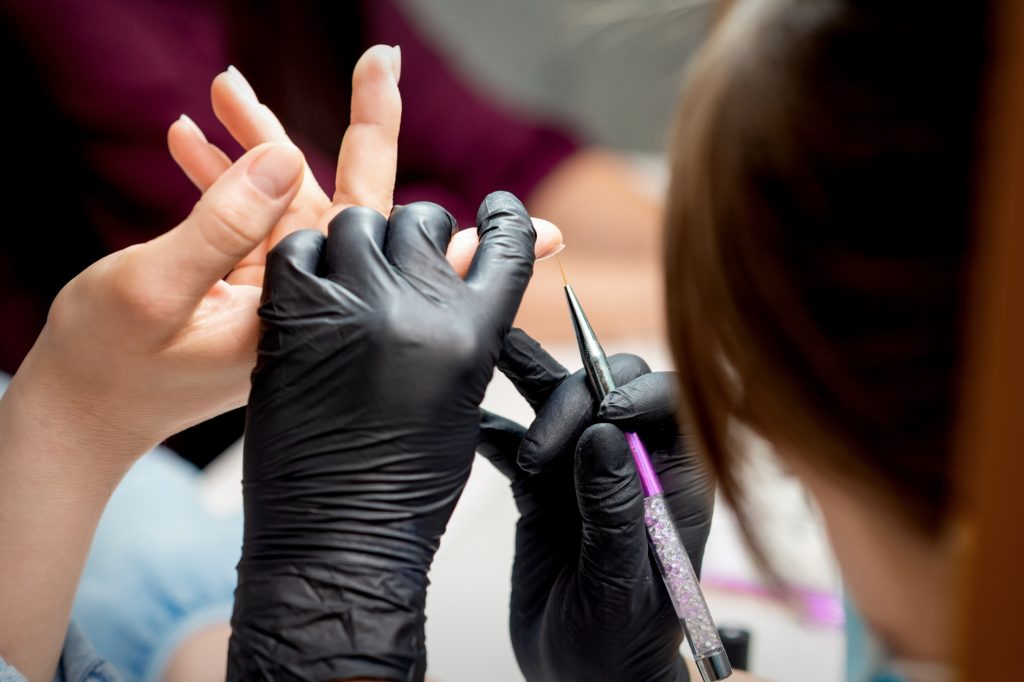Gel polish has become a popular choice for its long-lasting shine and durability, but for some, it can lead to an unexpected problem: an allergy. If you’ve experienced redness, itching, or other uncomfortable symptoms after using gel polish, you may be dealing with an allergic reaction. In this blog, we’ll explore how gel polish allergies develop and what you can do to recover from them.
How Do Gel Polish Allergies Develop?

Allergic reactions to gel polish are often caused by specific ingredients in the polish or the application process. Here are the key factors:
- Exposure to Acrylates
- Gel polishes contain chemicals known as acrylates, which help the polish harden under UV or LED light. These compounds can sometimes trigger an allergic reaction.
- Incomplete Curing
- If the gel polish is not properly cured under the UV or LED lamp, uncured monomers remain on the nail surface. These chemicals can seep into the skin and cause irritation or sensitivity over time.
- Frequent or Prolonged Use
- Repeated exposure to gel polish without breaks can increase the risk of developing an allergy. This is especially true if you frequently apply gel polish directly to the skin around your nails.
- Cross-Reactivity
- If you already have allergies to certain chemicals in other products, you may be more prone to reacting to similar substances in gel polish.
- Improper Removal
- Harsh removal methods, such as peeling or scraping gel polish, can damage the nail bed and surrounding skin, making it easier for allergens to penetrate.
Symptoms of a Gel Polish Allergy
Symptoms of an allergic reaction to gel polish can vary but often include:
- Redness or swelling around the nail
- Itchy or irritated cuticles
- Blistering or peeling skin near the nails
- In severe cases, lifting or separation of the nail from the nail bed
If you experience these symptoms, stop using gel polish immediately and consult a dermatologist.
How to Recover From a Gel Polish Allergy

Recovering from a gel polish allergy takes time and careful attention. Here’s how you can manage and prevent further reactions:
- Discontinue Use
- Avoid gel polish and any products containing acrylates until your symptoms subside. Switch to hypoallergenic nail care products during this time.
- See a Dermatologist
- A dermatologist can confirm the allergy through patch testing and recommend treatments, such as topical corticosteroids or antihistamines, to reduce inflammation and itching.
- Give Your Nails a Break
- Allow your nails and surrounding skin to heal by going polish-free for a few weeks. Focus on nourishing your nails with hydrating oils and creams.
- Opt for Alternative Nail Products
- Look for gel polishes labeled as “Hema-free” or “5-free,” which avoid common allergens. Alternatively, try regular nail polish or water-based polishes, which are gentler on the skin.
- Practice Proper Application
- If you return to using gel polish, ensure proper curing and avoid getting the product on your skin. Consider professional application by a trained nail technician.
- Protect Your Hands
- Use gloves when handling household chemicals and keep your nails moisturized to prevent further irritation.
Can You Fully Recover From a Gel Polish Allergy?
While you can manage the symptoms of a gel polish allergy, complete recovery depends on avoiding exposure to the allergens. Once an allergy develops, your body remains sensitive to the triggering substance. However, with proper care and alternative products, you can maintain beautiful nails without triggering a reaction.
Developing an allergy to gel polish can be frustrating, but it’s not the end of your nail care routine. By understanding the causes and taking steps to avoid allergens, you can protect your nail health and enjoy manicures without discomfort. Remember, your health comes first—beautiful nails are always achievable with the right approach!





